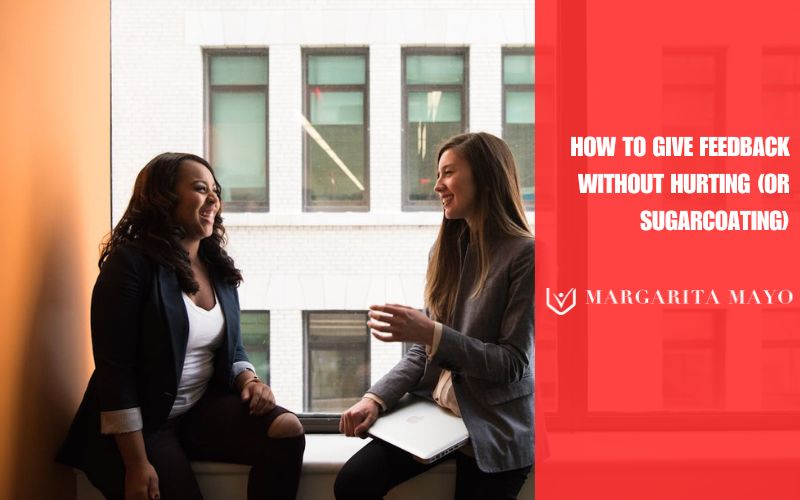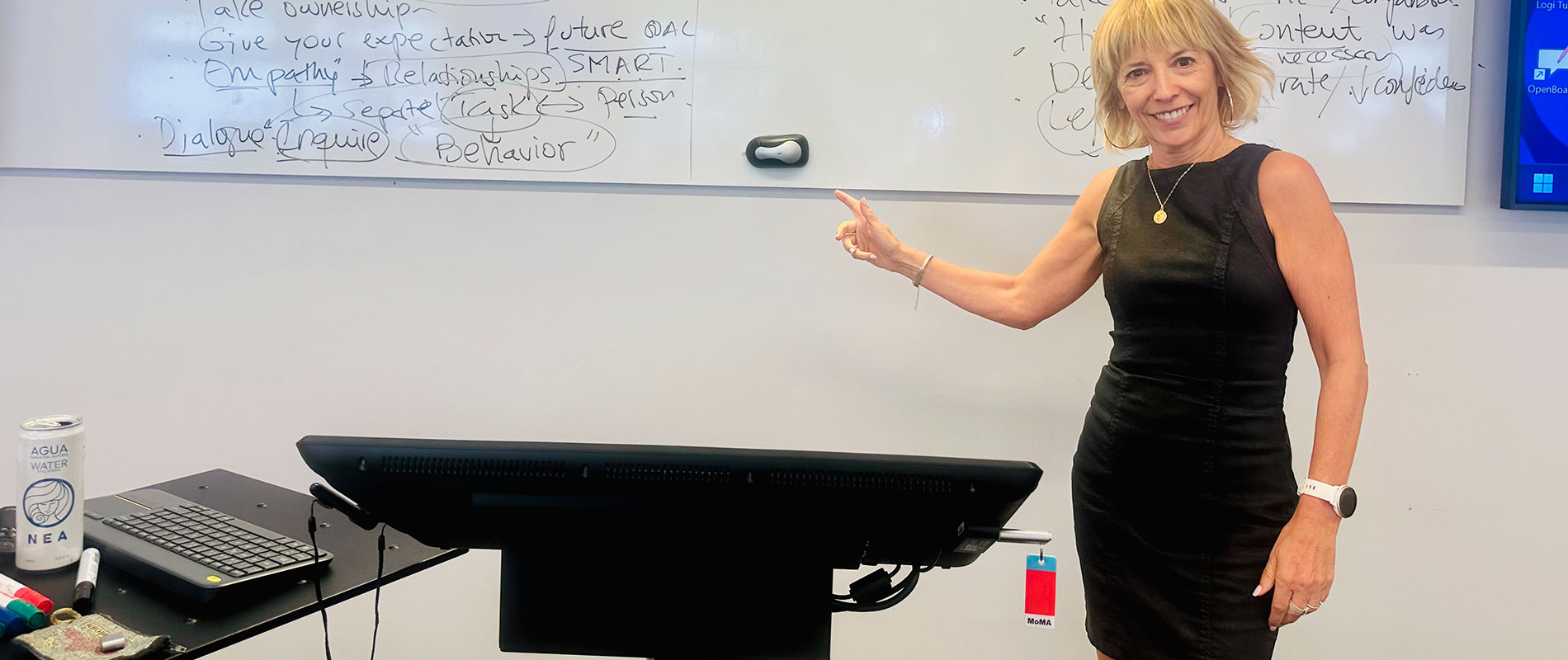Introduction
There’s one skill that separates leaders who merely manage tasks from those who transform people: the ability to give and receive feedback.
In my “Leadership and Teambuilding” course for Executive MBA students at IE University, I dedicate two full sessions to exploring the power of feedback. The first focuses on why feedback is essential for developing authentic leadership. The second is all about how to give and receive feedback without falling into the trap of defensiveness.
Because let’s face it: we all say we want feedback… until we actually get it.
Last week, I explored how feedback can make you more authentic as a leader. In this post, I go one step further: I offer a practical roadmap to help you give and receive feedback in a way that fosters real growth — without triggering emotional resistance.
Feedback Isn’t Just Information — It’s Emotion

We often assume that feedback is a rational process — someone tells us what we did well or poorly, and we simply take note and improve. But the reality is quite different: feedback is a deeply emotional experience.
No wonder — when someone highlights a weakness or mistake, it feels like our identity is being questioned. It threatens the image we hold of ourselves. If Descartes were alive today, he might say: “I feel, therefore I am.”
Why Is It So Hard to Hear?
Psychologist and Nobel Laureate Daniel Kahneman (2011) explains that we operate with two mental systems:
- System 1, which is fast, intuitive, and emotional, and
- System 2, which is slower, reflective, and analytical.
When we receive critical feedback, it’s System 1 that reacts first — and it does so as if we’re facing a threat.
In that split second, our ego kicks in. We deny. We justify. Or we run away from the conversation entirely.
The problem? The more we defend ourselves, the less we learn.
Feedback and Neuroplasticity: Changing the Brain to Grow
Learning from feedback doesn’t just change your behavior. It rewires your brain.
One of the most fascinating findings in neuroscience is that the brain is not hardwired, but highly plastic — meaning it changes in response to experience.
This neuroplasticity allows us to form new neural connections throughout life. Research shows that consciously practicing how we receive and act on feedback strengthens these neural pathways, making us more adaptive, aware, and authentic (Merzenich, 2001; Hölzel et al., 2011).
In fact, Hölzel’s research found that just eight weeks of mindfulness practice can increase gray matter in regions of the brain associated with emotional regulation and empathy — both crucial for leadership and feedback.
Learning Requires Unlearning

At first, many overestimated their skills. But the most authentic leaders gradually adjusted their self-perception. They learned to see themselves through the eyes of others — a powerful and humbling experience.
This is what Mezirow calls “Transformational Learning” — a type of learning that doesn’t just give you new knowledge but shifts how you see yourself. And it’s rarely comfortable.
Transformational learning often comes with an emotional fallout — a kind of internal shake-up that clears the way for a stronger, more authentic version of yourself.
By practicing self-reflection and opening ourselves to feedback, we unlock deep learning and broaden our potential for growth.
Defensive Reactions: What Do You Do with the Pain?
Our instinctive responses to feedback often fall into three categories:
- Deny: “That’s not true.”
- Justify: “I had no choice.”
- Attack: “You don’t know what you’re talking about.”
But there’s a better path: pause, regulate your emotions, and activate System 2. Ask yourself: “What part of this can help me grow?”
Accepting feedback isn’t a weakness. It’s a form of courage.
Research by Owens and Hekman (2012) shows that humble leaders — those who acknowledge their imperfections — are more likely to create psychologically safe cultures. These are environments where people feel free to speak up, take risks, make mistakes… and grow.
How to Give Feedback Without Hurting (or Sugarcoating)

Absolutely — but it requires intention. One of the most common mistakes leaders make is confusing honesty with harshness. “I’m just being direct,” we say — but often it’s an excuse to avoid empathy.
In her book Radical Candor, Kim Scott (2017) argues for a better approach: be clear, but be kind. Give honest feedback with empathy and care.
Scott’s model includes four styles of feedback:
- Radical Candor: Caring personally while challenging directly.
- Ruinous Empathy: Caring personally but avoiding challenge.
- Obnoxious Aggression: Challenging directly without caring.
- Manipulative Insincerity: Neither caring nor challenging.
Only Radical Candor creates learning, trust, and performance.
SBI+I: A Practical Framework for Tough Conversations
If you need a step-by-step guide, try the SBI+I model from the Center for Creative Leadership (2020). It helps transform feedback into constructive dialogue:
- Situation: Describe the context (“In this morning’s meeting…”)
- Behavior: Describe what you observed (“You interrupted María twice…”)
- Impact: Explain the effect (“That created confusion…”)
- Inquire: Ask for the other person’s view (“How did you see it?”)
This last step — inquire — turns feedback from a monologue into a conversation.
A Real-Life Story
During one of my coaching sessions on feedback with a group of executives, I witnessed a moving moment.
The team was using the Radical Candor and SBI+I models to give each other feedback on their interpersonal and leadership skills. One participant, after hearing constructive comments from peers — both areas for improvement and genuine recognition — began to cry.
But these were tears of gratitude.
At work, this person was used to receiving only criticism, rarely any appreciation. But in this psychologically safe environment, the feedback was honest, empathic, and uplifting. It helped them feel valued, and it boosted their confidence to keep growing.
Conclusion: Good Feedback Is a Catalyst for Transformation
Feedback hurts. But it doesn’t have to harm your learning.
Great feedback is:
- Descriptive, not judgmental: Focus on behaviors, not traits.
- Specific, not general: “Today you were late,” not “You’re always late.”
- Impact-focused, not intention-assuming: Share how it affects others.
- Balanced over time: Don’t sandwich every message; build trust consistently.
In the end, the most successful people aren’t the most technically brilliant.
They’re the ones who learn fastest — and learn through feedback.
So next time someone offers you feedback, pause and ask yourself:
👉 Am I using my energy to protect my ego… or to improve my impact?
References
- Kahneman, D. (2011). Thinking, Fast and Slow. Penguin.
- Scott, K. (2017). Radical Candor: Be a Kick-Ass Boss Without Losing Your Humanity. St. Martin’s Press.
- Mayo, M. et al. (2012). Aligning or inflating your leadership image? A longitudinal study of responses to peer feedback in MBA teams. Academy of Management Learning & Education, 11(4), 631–652.
- Merzenich, M. M. (2001). Cortical plasticity contributing to childhood development. Neuropsychopharmacology, 24(3), 341–347.
- Hölzel, B. K., et al. (2011). Mindfulness practice leads to increases in regional brain gray matter density. Psychiatry Research: Neuroimaging, 191(1), 36–43.
- Owens, B. P., & Hekman, D. R. (2012). Modeling how to grow: An inductive examination of humble leader behaviors, contingencies, and outcomes. Academy of Management Journal, 55(4), 787–818.
ABOUT ME

PhD in Management Psychology from the State University of New York (Buffalo), Fulbright Scholar at Harvard University, Master’s in Psychology from Clark University, and Professor at IE University. International speaker and award-winning author, passionate about transforming leaders and organizations through authenticity, well-being, and positive change. Author of Yours Truly.
You can contact me directly through the form for conferences, executive coaching, and workshops, and I’ll help you take that first step—with scientific evidence, experience, and purpose.

